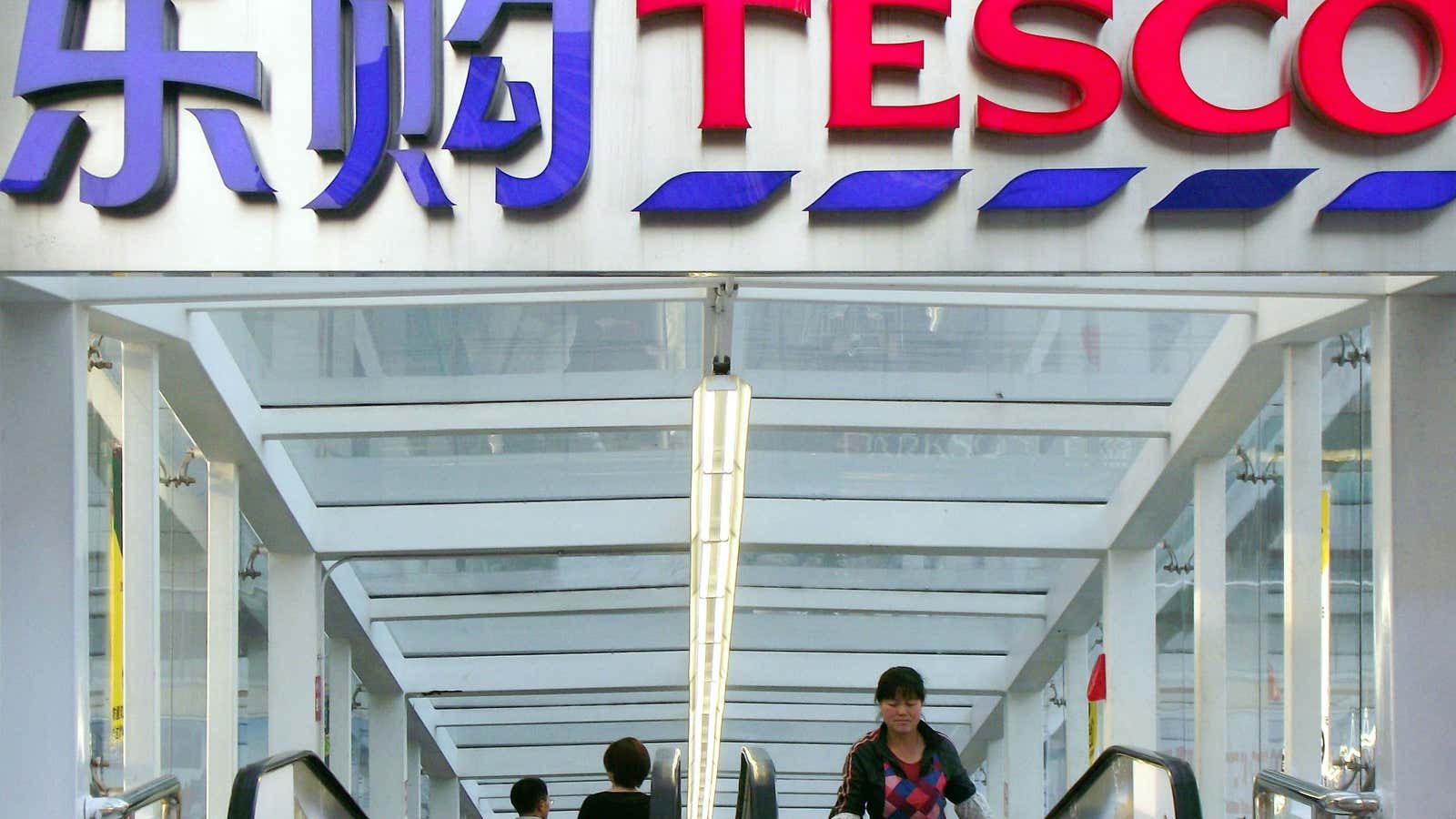Another Western big-box grocery is backpedaling in China. Today, British grocery chain Tesco said it’s in talks to form a joint venture with one of China’s leading grocery retailers, China Resources, a move that could effectively erase the British brand from the mainland. Under the deal, Tesco would put the 131 stores it operates in China under the command of China Resources and take a 20% stake in the venture.
Foreign mega retailers like America’s Wal-Mart, France’s Carrefour, and Germany’s Metro all had big plans to cater to Chinese families who now have the money and desire to shop in hypermarkets. Last year, China passed the US as the world’s largest grocery market, as formal shopping spreads into smaller, second and third tier cities. But, as we’ve written before, food and labor costs, local competition, and Chinese shopping habits have hindered the campaigns of Western grocery giants.
Tesco opened in China in 2004 and planned to open 200 stores and 50 shopping malls by 2016, but its market share has slipped in recent years, as has that for Carrefour. (Tesco’s was 2.4% last year, down from 2.9% in 2008; Carrefour’s was 6.9% in 2012, compared to 9.1% three years ago, according to the research group Euromonitor.) Metro said earlier this year it would be shuttering its consumer electronics retail business in China to focus on wholesale goods.
So who is dominating Chinese grocery retail? Sun Art Retail Group, which runs the hypermarket chain RT Mart has a market share of 13.6%. Its strategy? Using the big box format but appealing to traditional Chinese shopping habits including wet markets with live fish and fresh poultry. Another habit of Chinese shoppers is that they expect to pay bargain-rates on staple foods but premiums for high-end brands. China Resources, an arm of the state-owned China Resources Holding, Tesco’s potential partner, appeals to that with its stores like BLT and Ole, which sell mainly imported goods.




